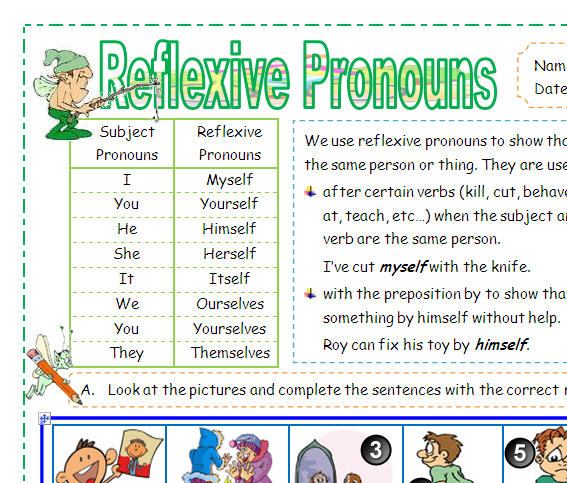

In order to conjugate reflexive verbs in Spanish, we need to remove the ‘ se’ from the end of the infinitive form and move it to the front of the verb. To wash oneself, to get (oneself) up, to look at oneself… The literal translation of these verbs is: Just look at the ‘se’ in these reflexive verbs in Spanish below: In Spanish, this pronoun is already part of the verb. Examples of reflexive verbs in SpanishĪs established a little earlier on, reflexive verbs in English are demonstrated with pronouns like myself, himself, ourselves etc. ⭐ HE is both the object AND the subject of the sentence.

Object: he (himself: same as the subject) So, where is the Spanish reflexive verb? Take a look at this next example: In Spanish, you can translate this sentence the same way: The following examples should make things a little clearer. The object is the person, place or thing that receives the action performed by the subject.

The subject of a sentence is the protagonist of the sentence – whether it’s a person, a place or thing. In Spanish, conjugating a reflexive verb works a little differently. In English, we use the pronouns ‘ myself’ ‘yourself’ ‘himself’ etc. Reflexive verbs are less common in English, which is what makes understanding them a little difficult sometimes for English speakers. In Spanish, if a verb has se at the end then it is reflexive.

Notice anything similar about them? They all have se attached to the end. Lavarse, ducharse, despertarse, vestirse, levantarse … Some examples of reflexive verbs in Spanish, which are present amongst AR, ER and IR verb groups, are as follows: Whether you’re using the present tense, the preterite tense, or any other tense, this rule will always stay the same. In other words, a person is performing an action on oneself. What are the most common Spanish reflexive verbs?Ī reflexive verb in the Spanish language, put simply, is a verb whose direct object is the same as its subject. The goal of this post is to answer and provide clarity to the following questions. I highly recommend it! You can get your copy below 🙂 The book I’m holding in the image above, Barron’s 501 Spanish Verbs, is the book I used to learn over 500 regular, irregular and reflexive verbs in multiple tenses. Oh, by the way, that’s me! My name is James, I’m a Spanish tutor and the author of most of the language material on this site. Reflexive verbs are a key part of the Spanish language and you’ll need to understand them when learning Spanish beyond beginner level.īy the end of this guide, you’ll know what a reflexive verb is, what the most common ones are in Spanish and how to use them in the present tense. But, believe it or not, reflexive verbs really aren’t too difficult to get your head around. The concept of reflexive verbs in Spanish can be difficult for many beginners to understand.


 0 kommentar(er)
0 kommentar(er)
